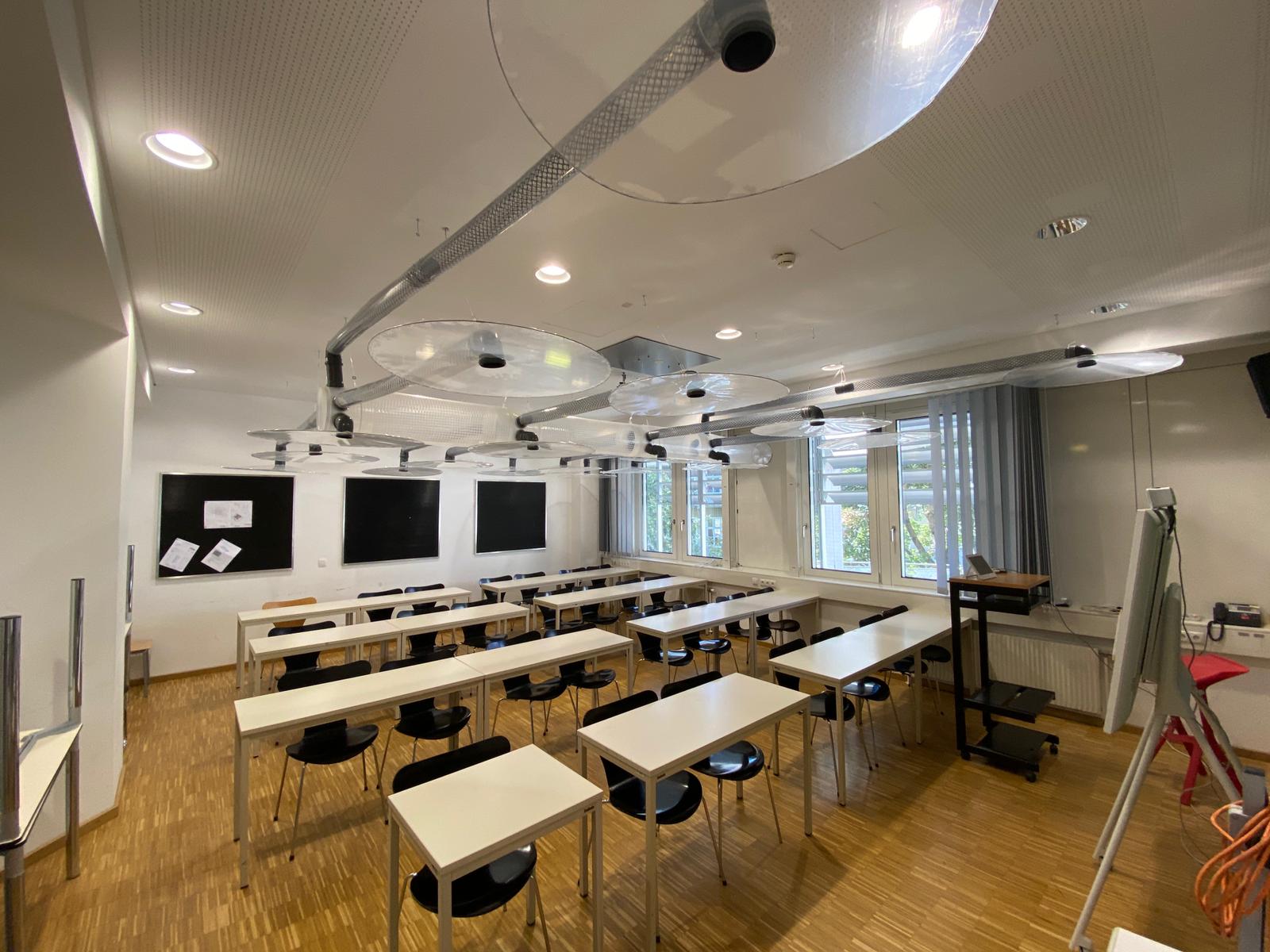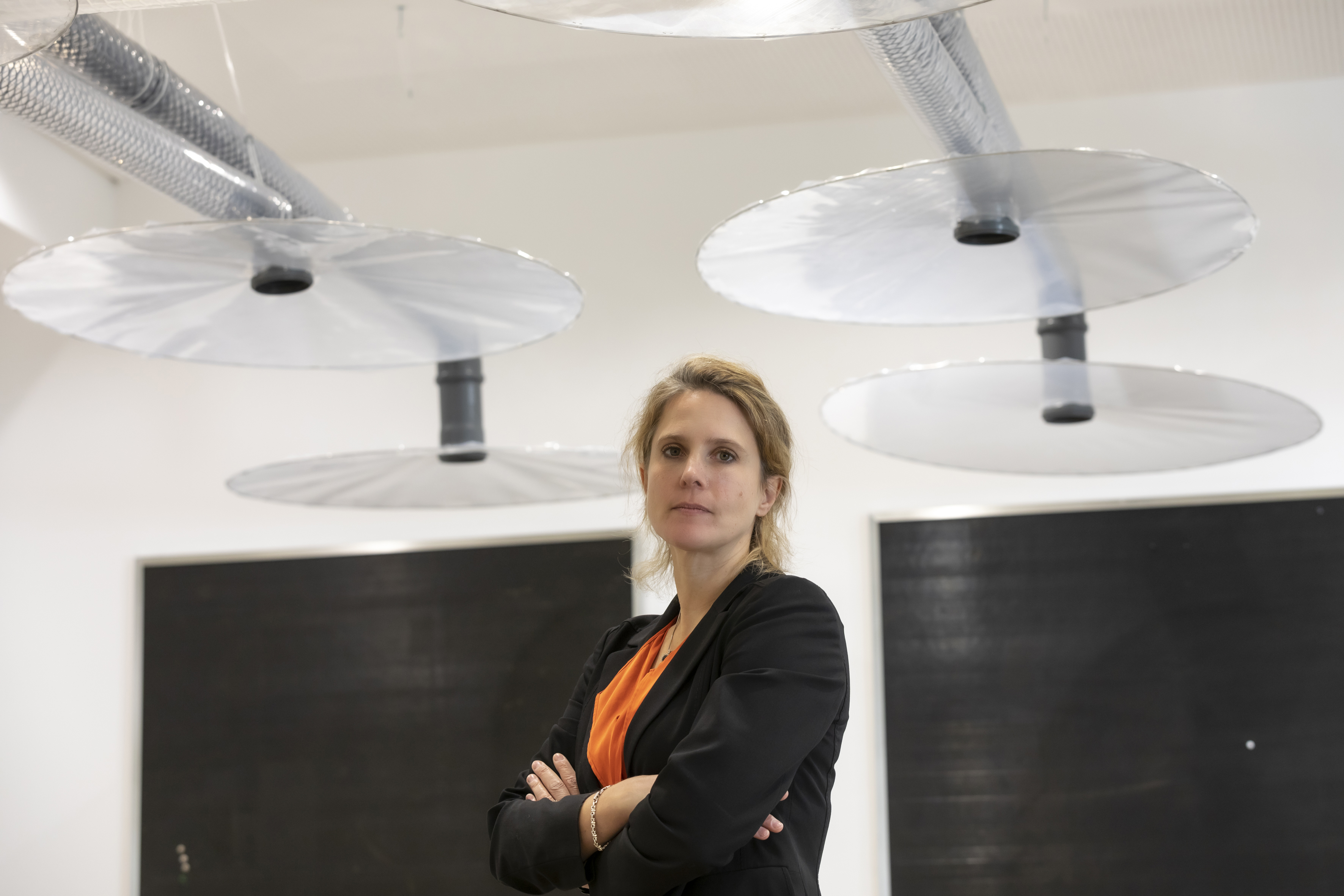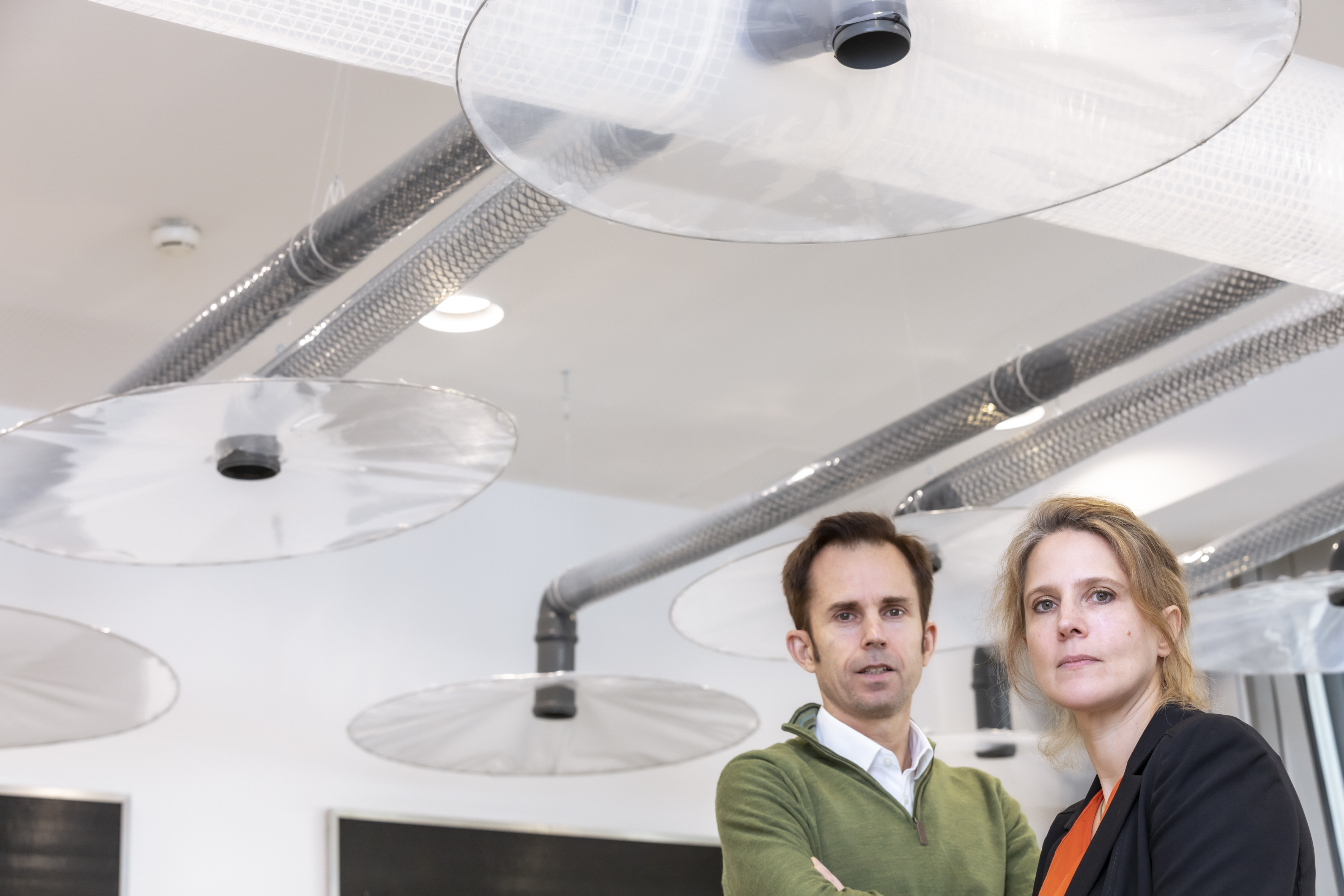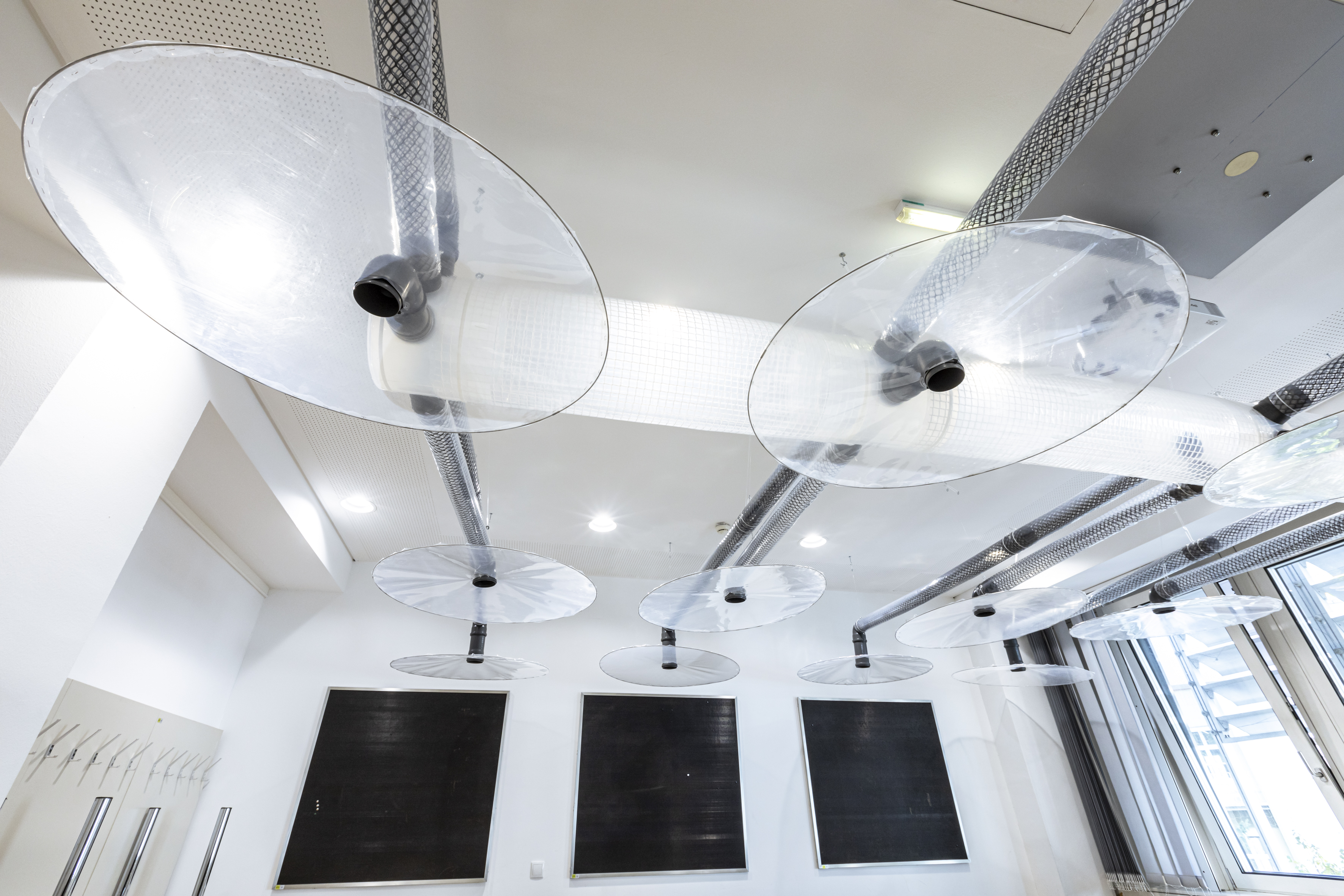Spread of Covid-19 in Schools: Video Instructions for Effective Low-cost Ventilation System with DIY-Materials
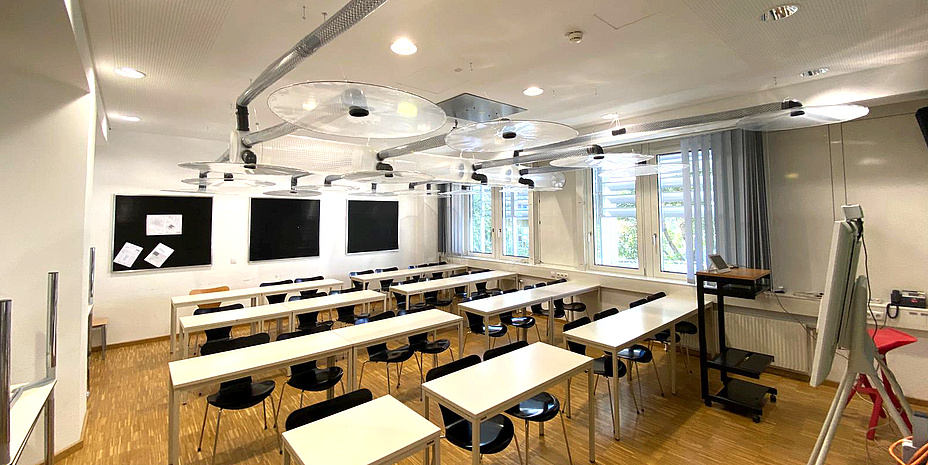
In the third year of the corona pandemic, the data clearly show that effective ventilation, i.e. the replacement of stale indoor air with fresh outdoor air, massively reduces the concentration of infectious particles in the air. At the same time, however, ventilation in classrooms is often too infrequent and too short.
Christina Hopfe and her team from the Institute of Building Physics, Services and Construction (IBPSC) at Graz University of Technology (TU Graz) are now sharing promising findings and information on how to improve this situation: In autumn 2021, the researchers, led by Robert McLeod (IBPSC), equipped two classrooms at the Sacré Coeur School in Graz with a low-cost and simply built extract ventilation system based on a concept from the German Max Planck Institute, as pilot tests. The system removes stale, aerosol-laden air via extractor hoods and at the same time provides a continuous supply of fresh air.
Using commercially available components, most of which can be bought directly in DIY stores, this system can be built for material costs of around 500 to 700 euros per classroom. Explanatory videos (in English and German) illustrate the construction and installation of the system and these are available on the Institute's website at www.coved.tugraz.at and the TU Graz Youtube platform, with written DIY instructions to follow by mid-August. "With well-designed and installed exhaust fans, the risk of infection is about eight times lower than current practice. Every classroom (and/or communal room in the kindergarten) can be easily and inexpensively retrofitted with such an effective extract ventilation system. It would be a great contribution to reducing the risk of infection and improving indoor air quality in all educational buildings," says Christina Hopfe.
Play video
Aerosols out, fresh air in
The principle of the extract ventilation system is simple: warm air rises, transparent extraction hoods under the ceiling draw this stale air in, which includes the infectious aerosols, exhaust ducts then transport this stale air outdoors powered by a small ventilator. A tilted window, which can be sealed at the side in cold winter months to prevent draughts, or an intake duct ensures a permanent supply of fresh air. The use of exhaust hoods in combination with an upward airflow helps to remove the majority of aerosols directly above the infected persons before they can circulate in the room.
"This is where our extract ventilation system differs significantly from expensive air filtration systems that draw in air to clean it. Filter systems are not a form of ventilation but rather clean the air locally. Filtration systems work by drawing in air from every direction, which means that the virus is not extracted where it is, but can circulate throughout the room before it is eventually removed. As a result, people in certain parts of the room can be exposed to a greater aerosol concentrations over time," Hopfe describes and continues: "The filtration systems are very helpful, but in our opinion should only be used as a supplement to other uses of continuous ventilation."
Low-maintenance, effective and cheap
The extract ventilation system has a number of advantages in addition to those mentioned above: There is no need to interfere with the building structure, the system has no filters and thus requires virtually no maintenance, it is a lot quieter and less expensive than most air filtration systems, and, perhaps surprisingly, it is even more energy efficient compared to natural ventilation in our climate. "And the bonus: No one has to freeze sitting next to wide-open windows," says Hopfe.
The researchers set up and installed the extract ventilation system together with students from TU Graz and then discussed it with the pupils of the Sacré Coeur. "It was a very exciting project for the children," says Christina Hopfe. In general, this could also be done by the school's respective technical staff. "It is relatively simple to set up and install this system. The components are available at the hardware store, and we have described everything in a detailed video along with step-by-step instructions, that will soon be published online," says the building physicist.
In addition to the explanatory video on the extract ventilation system, a step-by-step construction manual will follow by mid-August 2022 on www.coved.tugraz.at.
CO2 concentration as indicator for aerosol concentration
In addition to the extract ventilation system, the two classes were also equipped with a CO2 sensor which includes a built in traffic light warning system. CO2 can neither be smelled nor felt, so bad air is often only noticed much too late, resulting in drowsiness and difficulty concentrating. In addition, the higher the CO2 content in the room, the higher the aerosol concentration. The traffic light display system shows when more fresh air is needed with clearly visible colouring.
"In our eyes, the minimum pandemic response would be to ensure constant monitoring of the CO2 concentration in schools, kindergartens and university buildings. CO2 sensors do not detect coronaviruses, but they clearly indicate when it is time to ventilate. And as with taking a temperature, the same applies here: It does not have to be measured to three decimal places. To stay with the comparison: Whether 39.7 or 39.8 degrees body temperature, it's almost the same thing, namely high fever in any case. When the CO2 concentration rises above a certain threshold range (from about 1000 ppm; parts per million), more fresh air is needed. There is no point in getting lost in the question of measurement accuracy here," Christina Hopfe emphasizes.
The crux of ventilation in schools
In Austria, most schools use natural ventilation, which means ventilation through openable windows. In winter, it is often too cold for windows to be continuously open. In summer, on the other hand, it is often too hot to air the rooms and in urban locations it can be too disruptive in many classrooms due to the traffic noise when the windows are open. In schools with ventilation systems, on the other hand, we often found deficiencies in maintenance and operation. So ventilation is rarely adequate, and that was the case even before Covid."
Kontakt
Christina Johanna HOPFE
Univ.-Prof. Dipl.-Ing. dr
TU Graz | Institute for Building Physics, Services and Construction
Tel.: +43 316 873 6240
c.j.hopfe@tugraz.at



